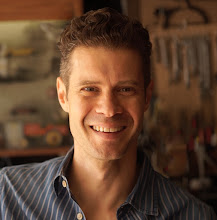Cel rendering
There are two main components to rendering your scenes in a cel style: ink and paint.
Fill
Paint is the body of the image, usually limited to two or three tones to show the color, shadow and highlight regions of the model. We still light these with direct lights, but instead of the typical lambert, blinn, or phong shading models (with gradients) we will see flat colors and sharp deliniations.
The way to get this paint look is with a ramp shader and a facing ratio sample. Pick your model and then choose Toon > Assign Fill Shader > and pick one. Maya has some presets for these types of shaders (called "Fills") in the Toon section of the rendering menu. Here are the main types:
Solid Color
This is a straight Surface Shader. This is great for objects that you want no shading on, like eyes, for example.
Light Angle Two Tone
This gives you a ramp of two colors for light and dark areas on the model. The color choice come from the direction of the light, and the brightness of the colors will change as the light gets brighter or darker.
Shaded Brightness Two Tone
Similar to above, the color choice comes from diffuse brightness, rather than light angle. Can give nicer curvature of the shading effect over the surface, and the colors are constant -- they don't change based on light intensity.
Shaded Brightness Three Tone
Is like the above, but with a third color in the ramp for the highlits of the surface.
Dark Profile
This one does some trickery with the incandescence to create a dark rim around the profile. Can be a cheap way to avoid ink lines for some models.
Rim Light
This is like the above, only with a bright color incandescence to create a rim around the object.
Circle Highlight
This one creates a very bright highlight by mapping a ramp to specular color, so things look shiny.
Toon Lines
Ink is the other half of the cel render look. Maya can generate magical lines that change based on viewing angle to the camera. To create them, select the model (or a few models) and go to Toon > Assign Outline > New Toon Line. These toon lines can be based on a number of factors:
Profile Lines
Profile lines define the visible outer edge of your model.
Crease Lines
Creases are the hard edges in your model. These can show up even when they aren't at the outer edge of the current model view. For example, the corner of a cube facing you will show up as a crease line with default settings. This can be adjusted based on crease angle.
Intersection Lines
If you create a toon line that spans multiple models you will get an intersection line wherever the two models intersect. Push a ball into a wall and you'll see a line on the wall where the two meet.
Borders
Borders are the final edges in a model or where there is a material change between faces.
Scene file: toonShrooms.

0 Comments:
Post a Comment
<< Home